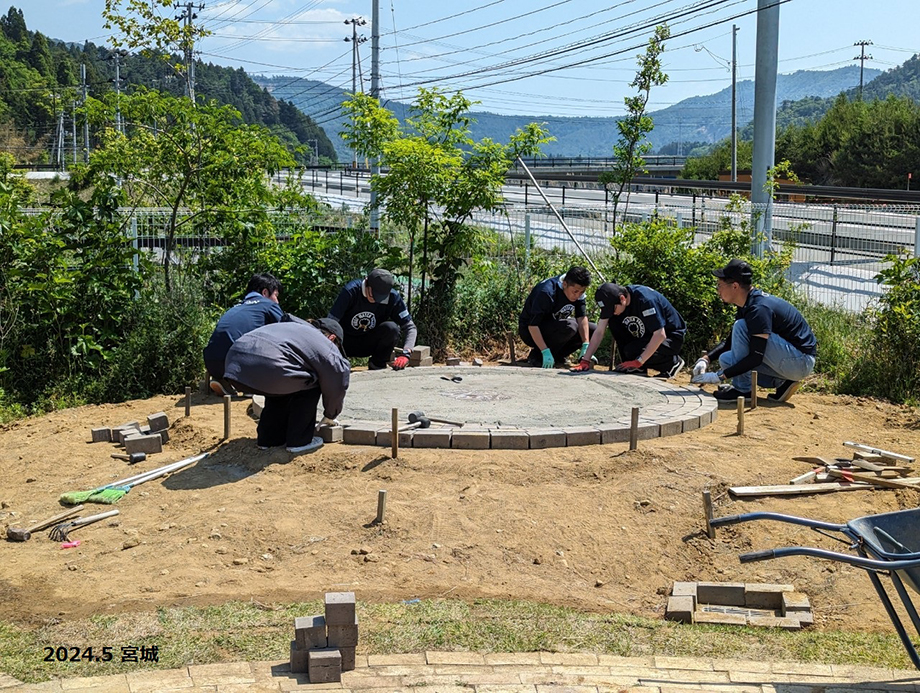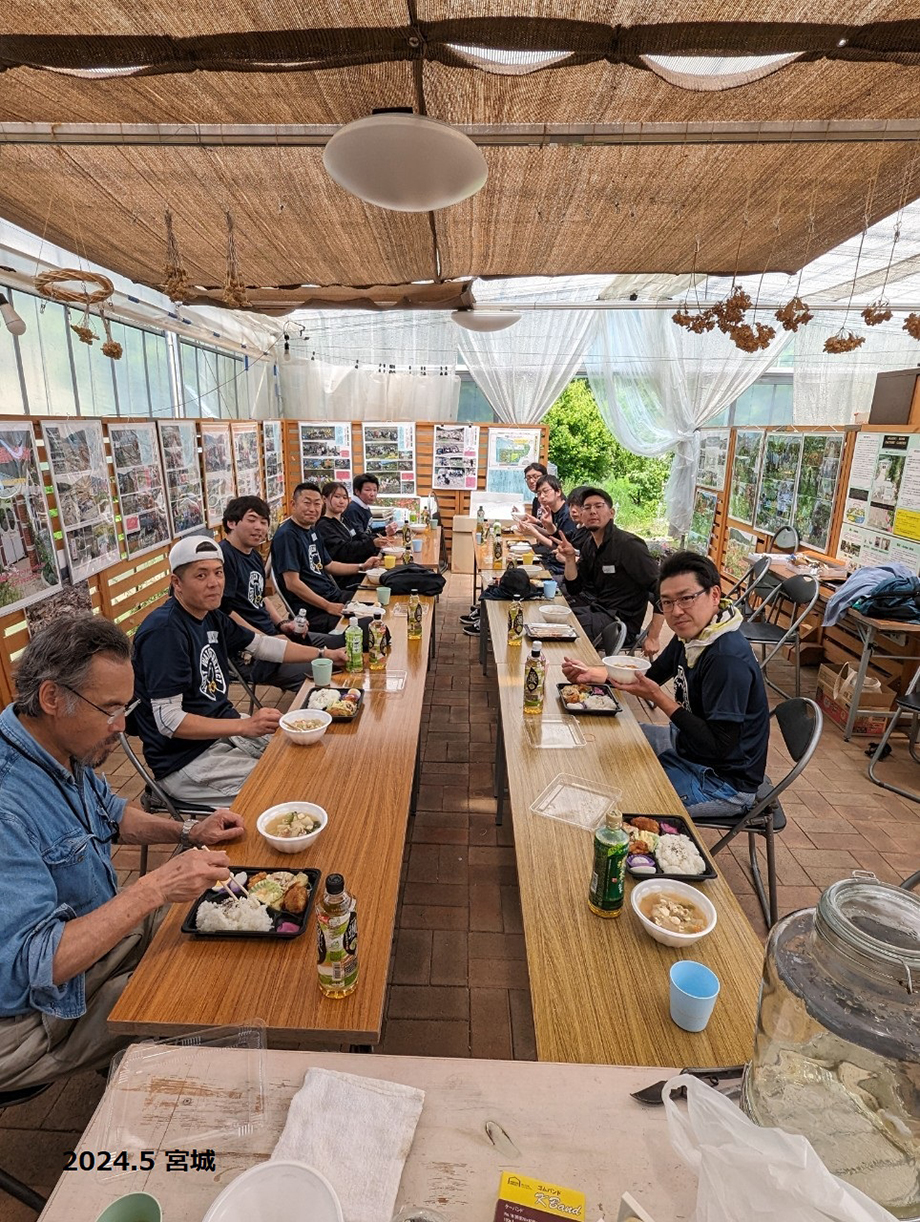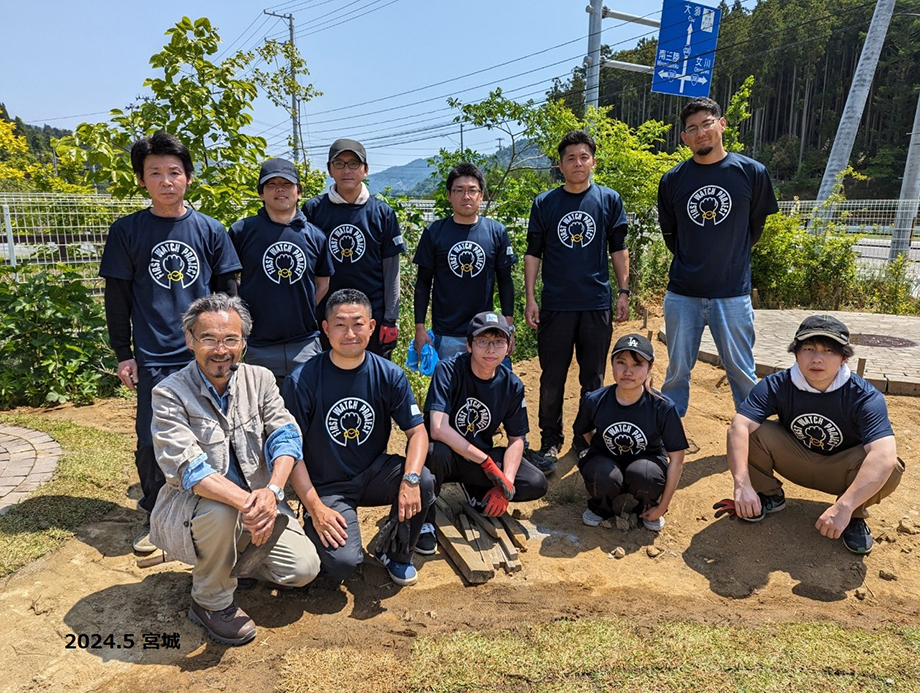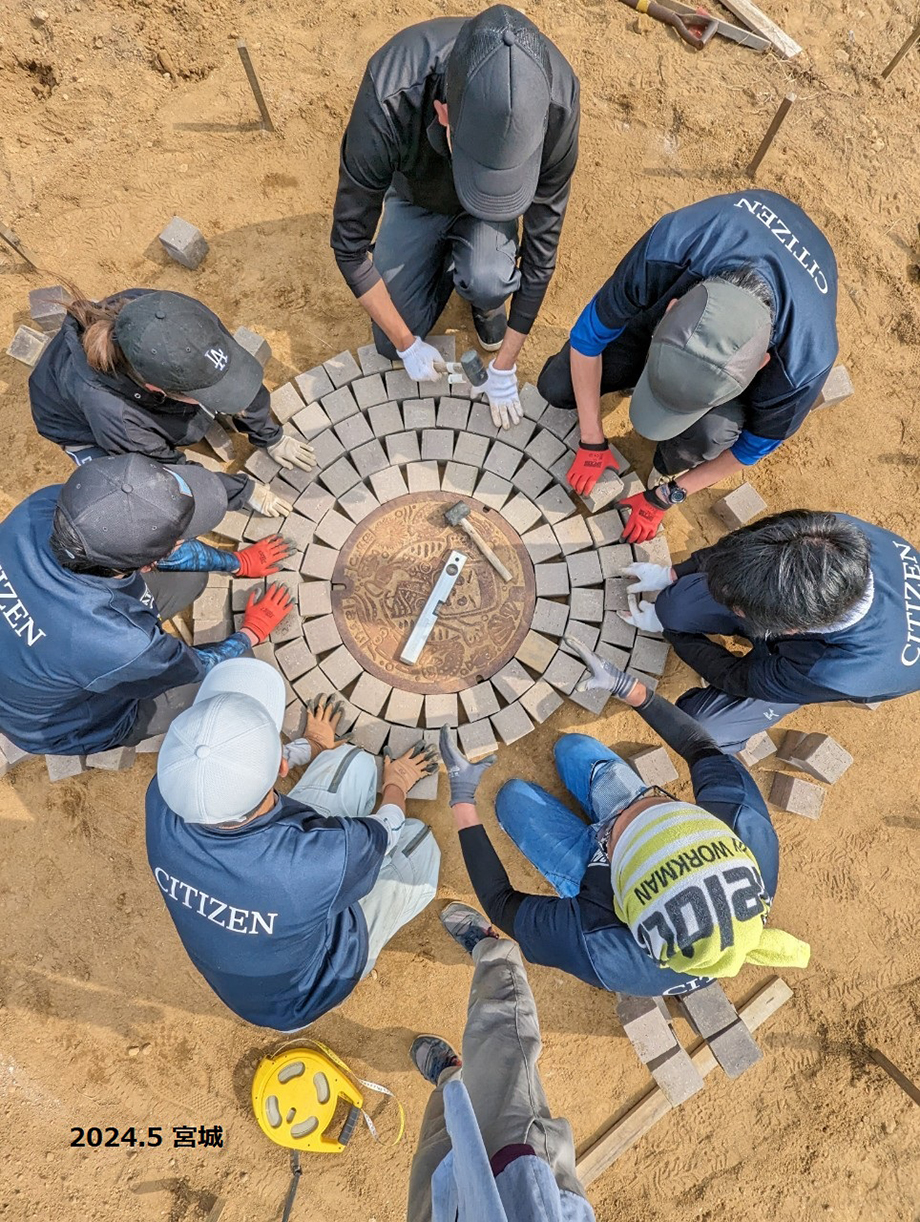Social Contribution Mission Program
Background and history of activities in Miyagi Prefecture
The town of Ishinomaki, Miyagi Prefecture, was severely damaged by the tsunami caused by the Great East Japan Earthquake. A survey of population trends one-half year after the disaster showed that it had suffered the greatest decrease in population of all municipalities affected by the earthquake with a drop of 6,511 persons. Today, many people affected by the disaster live in temporary housing. A wide range of activities are underway to bring some brightness back to this area where many homes and buildings were destroyed by the disaster.
FY 2018 support period: November 26-28, 2018
FY 2019 support period: May 22-24, 2019
FY 2023 support period: October 23-25, 2023
FY 2024 support period: May 22-24, 2024
FY 2025 support period: May 19-21, 2025
Location: Ogatsucho, Ishinomaki, Miyagi Prefecture
Social challenge: Building a disaster-resilient community![]()
Activity: Support for the restoration of a disaster-affected area
In cooperation with Ogatsu Flower Story, an NPO in the area, through the the intermediary of the specified nonprofit organization, NICE, Group employees (FY 2018: 15 employees; FY 2019: 9 employees; FY 2023: 10 employees; FY 2024: 10 employees; FY 2025: 14 employees) took part in these activities in Ogatsucho, Ishinomaki, Miyagi Prefecture. The improvement activities of Ogatsu Rose Factory Garden *1 included preparing planted olive trees (mature trees) for winter, ground improvements for better drainage, and replanting with lavender and other plants.
*1Rose Factory Garden
Rose Factory Garden got its start in August 2011 when Rie Tokumizu, current head of Ogatsu Hana Monogatari*2, began planting flowers in remembrance of her family on the site of her former family home in Ogatsu, which had been buried in rubble in the tsunami that claimed their lives. The site began developing into a full-fledged garden when she later met a group from the Faculty of Horticulture at Chiba University, who had supported greening efforts in disaster-stricken areas. The project, which started as a way to pay respects to her deceased family, led to interactions that ended up forming a new community. The garden brings meaning to members' lives while providing opportunities for healthy activity.
*2Ogatsu Hana Monogatari
The city of Ishinomaki in Miyagi Prefecture suffered severe damage in the tsunami triggered by the Great East Japan Earthquake. A population census conducted six months after the disaster indicates that the population here fell by 6,511 people—more than any other municipality affected by the earthquake. There are still many disaster victims living in temporary housing still today.
The Ogatsu Hana Monogatari Project is the name for the activities that Ms. Tokumizu and her supporters did to open Rose Factory Garden on the site of her home that was destroyed by the Great East Japan Earthquake tsunami. Flowers are being planted in the hopes that garden will still be flourishing ten or twenty years from now, serving as a place where neighboring residents can gather and interact with one another.
The project also aims to restore the local area and provide a place for the local community while carrying out post-disaster greening activities, providing disaster preparedness education, growing herbs, test-growing fruit trees suited to the Ogatsu area, and more. They've especially been putting effort into growing olives, which they've named Hokugen (or “northern limit”) olives.



